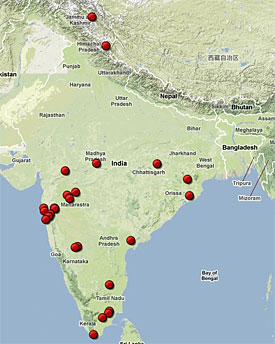World 🢖 Asia 🢖 India 🢖 Maharashtra
Buddhist shrines 🢔 Religious architecture 🢔 Archaeological wonders 🢔 Categories of wonders
Wonder
Pitalkhora Caves
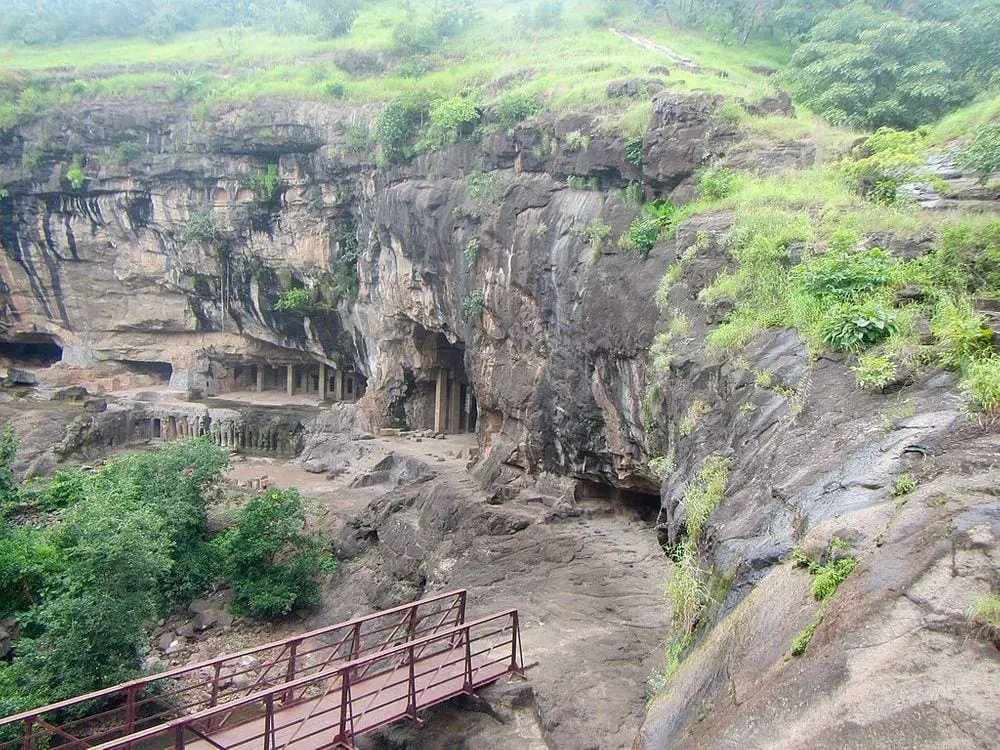
 In short
In short
OOnce upon a time, more than 2000 years ago Pitalkhora Caves belonged to largest temple complexes of Buddhists in India and nowadays this is the largest group of Hinayana Buddhism monuments in India.
 44.8%
44.8%
GPS coordinates
Location, address
Alternate names
Age
Religion
Map of the site
If you see this after your page is loaded completely, leafletJS files are missing.
 In detail
In detail
Visit in these exotic caves starts with an impressive walk through dramatic natural scenery – through an impressive canyon. One can imagine, that this beautiful natural setting certainly helped to find inspiration to create the beautiful art of these ancient Buddhist temples.
Ancient temples in canyon
Pitalkhora Caves are located in a remote, deep, wild river valley cut in basalt. One has to descend steep steps in a deep valley and cross an iron bridge, admiring the beautiful scenery along the path. This area looks especially beautiful during the middle of winter, in a rainy season when the stream and waterfalls are full of water and soil is covered with lush greenery.
There have been preserved 11 – 14 caves up to this day. 9 caves are located on the southern side of the canyon and form Group I. 2 – 5 small caves are located on the northern side of the canyon and form Group II.
Soft basalt
Usually, basalt belongs to the hardest rocks but in this part of Maharashtra, it is somewhat softer than elsewhere. Builders of caves noticed it and there were applied several technically perfect solutions to this problem, helping to preserve at least part of art treasures up to this day.
Thus, for example, in the ceiling of Cave 4, there were bored long tunnel-like openings. Water through these openings freely flowed into the cave, where it was channeled under the floor in concealed drain channel which led the water out of the cave.
Unfortunately, throughout thousands of years a major part of the former glory of caves has been lost. Especially painful is the loss of most paintings. The gradual collapse of the face of the cliff has removed the sculptures on the facade of this complex. Also, the walls of ancient structures seem to be too thin.
To prevent further collapse of caves some of the original columns in caves have been replaced by concrete columns. On remaining pillars still can be seen remnants of murals.
History in short
The true story of the creation and existence of Pitalkhora has been forgotten long ago.
It is guessed that the name of caves can be identified with “Petrigala” of Ptolemy’s and “Pitangalya” of “Mahamayuri”, a Buddhist chronicle.
These caves belong to the oldest rock-cut cave temples in India and were developed during the Hinayana period, during Satavahana and Kshaharata dynasties. It seems that later caves were abandoned to be revived again some centuries later, during the Vakataka dynasty. Exquisite murals were added in this second period, in the Mahayana period. Thus sculptures of these caves are created around the 1st century BC – 1st century AD, murals – approximately in the 4th century AD.
Inscriptions found in caves provide some possibilities for dating. These inscriptions have been made from 250 BC to the 3rd – 4th century AD. Two inscriptions mention “Pathitana” – Pratishtana, capital of Satavahana Empire. One inscription mentions “Dhanyakataka” – present-day Dharanikota, Andhra Pradesh.
These caves were rediscovered comparatively late, later than Ajanta Caves. The first time when caves are mentioned in the publication is in 1853 when Caves 3 and 4 were described.
Description of caves
Four caves in this complex are chaytya grihas – large shrines. Other 10 caves are monasteries – viharas.
Pitalkhora Caves are extremely rich with carvings, more rich than, f.e. famous Ajanta Caves. Sculptures here are similar to contemporary creations in Sanchi, Karla Caves and Pandav Leni Caves.
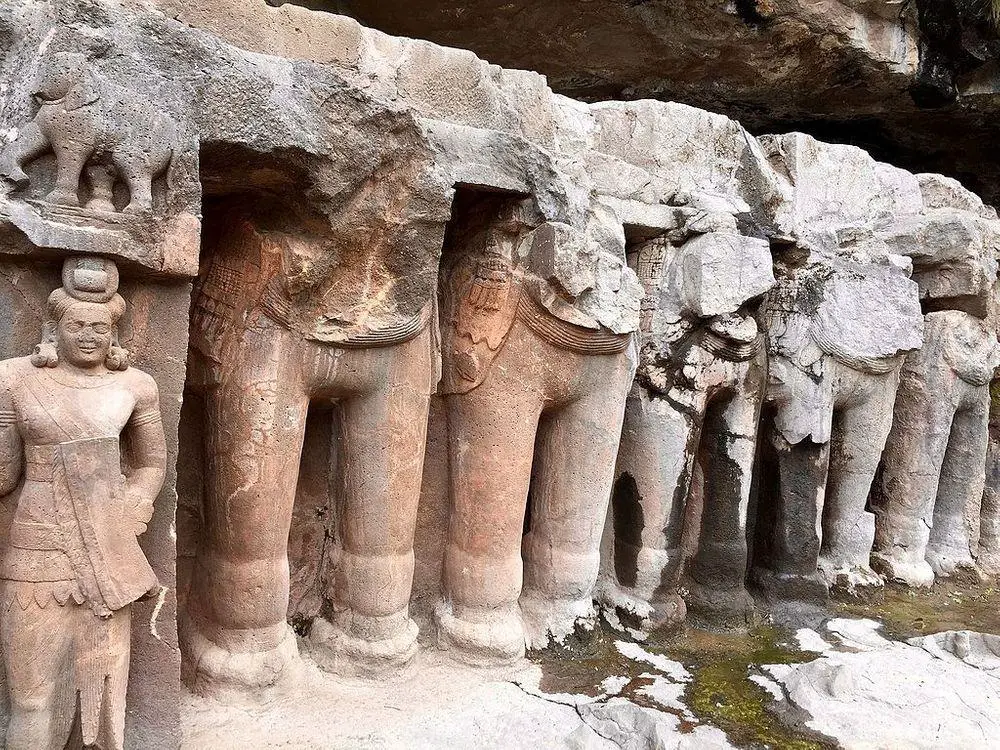
Group I
Complex (Group I) is entered through a gate consisting of a wide terrace, the door of the entrance is flanked by naga and guardians. A row of carved elephants supports the complex. Unfortunately, all sculptures are badly damaged by time. The stair leads to the main shrine – chaitya (Cave 3). Cave 1 now looks just like an enormous opening – possibly it was a large monastery.
Entrance in the cave is flanked by serpents and guardians. Elephants decorate the halls. Sculpted miniature chaitya windows. The unusual and beautiful sculpting includes figures of yakshas – evil spirits looking like females.
Caves 2, 3, and 4 share the same forecourt and possibly are created in one period. Dividing between caves 2 and 3 has disappeared. Cave 2 was a vihara with an ingenious water drainage system to prevent damage to the shrine – cave 3.
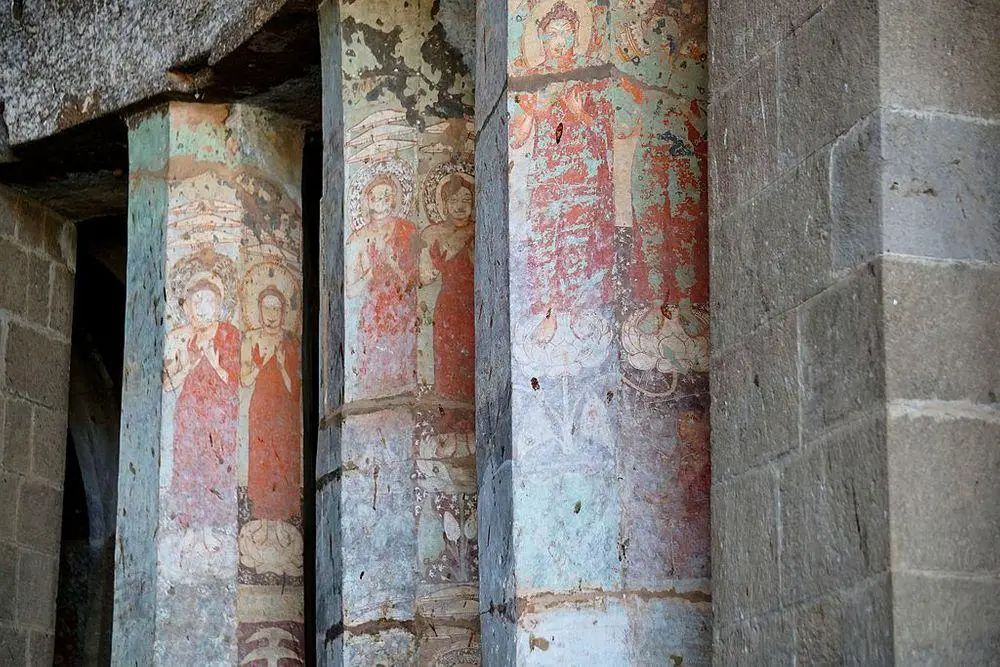
Cave 3 contains the best murals, which have been preserved on columns. In total there are 37 columns separating the aisle from the hall. Inscriptions by residents of Paithan on the 10th and the 11th pillars on the right testify that these pillars were donated individually. Steps lead down to the basement with some more carvings.
Cave 4 contains carvings of elephants and horses, also inscriptions left by donors. The cave contains also a carved panel depicting Buddha as a prince who is leaving his palace.
Cave 5 is heavily damaged vihara. Loose boulder contains inscription left by a guild of bankers and telling about their gift. Cave 6 – vihara – contains traces of murals. Between two next viharas – caves 7 and 8 – there is unfinished rock-cut cistern.
Cave 9 is large vihara, contains remnants of plastering and murals.
Group II
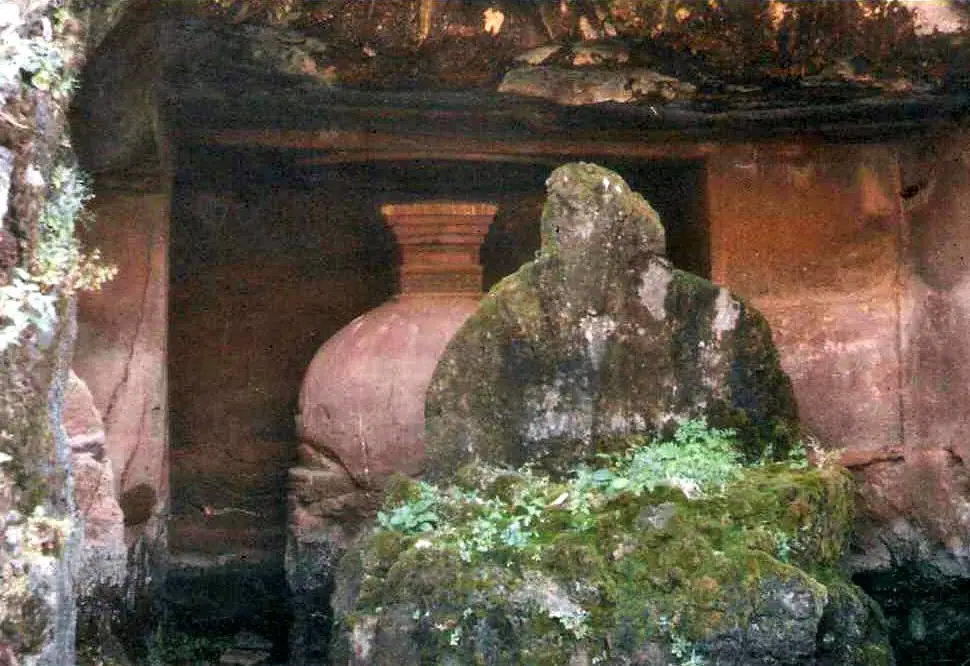
Caves in Group II across the valley are chaityas and contain stupas. These stupas are twice as high as humans. These extremely heavy sculptures have been moved in these hardly accessible caves from elsewhere and fixed in niches provided for them. Also, the design and planning of caves do not fit with stupas – possibly these stupas were added to caves to commemorate deceased important Buddhist monks.
Cave 11 contains several stupas. Caves 13 and 14 are in very poor condition, they share the same forecourt, contain unique sculptures.
References
- Pitalkhora Caves, Archaeological Survey of India. Page not accessible now, was accessed in 24 April 2010.
- Pitalkhora, devi.org, with numerous images, accessed in 24 April 2010.
- Pitalkora Cave, Maharashtra Tourism, accessed in 11th July 2010.
Pitalkhora Caves are included in the following article:
 Linked articles
Linked articles

Wonders of India
India is the seventh-largest country in the world by area, and, naturally, such a large area contains a huge amount of exciting attractions…
Wondermondo considers that India is the second richest center of architectural heritage in the world after Europe and maybe no single country in the world can match it in this respect.

Buddhist shrines
Buddhism is one of the world religions and at the same time is a spiritual philosophy with diverse traditions, beliefs, and practices. There exists a rich tradition of architecture expressed in Buddhist temples and monasteries.
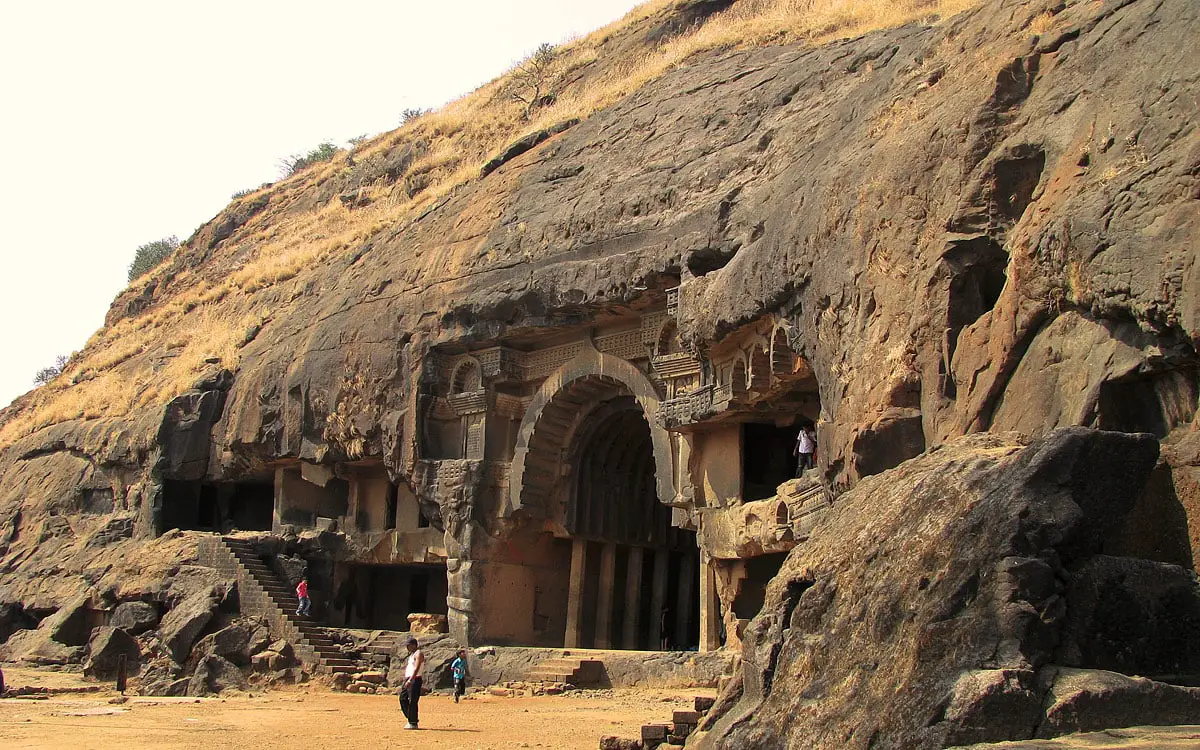
Rock-cut architecture and sculptures
Rock-cut architecture is a very ancient form of architecture – the oldest structures are more than 5 thousand years old. The resistivity of the natural stone and the constant climate inside these structures has preserved many art values around the world.
 Recommended books
Recommended books
India Unveiled: Spirit, Tradition, People
This is the one book you need to understand the spirit of India. Internationally acclaimed as the best book of its type on India, this sixth expanded, revised edition of the multi-award-winning book India Unveiled: Spirit, Tradition, People by Robert Arnett truly reveals the diversity and sacredness of the oldest continuously living civilization on earth.
India: A Sacred Geography
A spiritual history of the world’s most religiously complex and diverse society, from one of Harvard’s most respected scholars.

